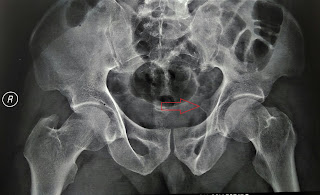Q. Painful neuropathy and intact nerve anatomy is called ?
a. Neuralgia
b. Neuropathic pain
c. Neuropraxia
d. Neurostenalgia
e. Neuroma
Answer -
d
Continuous irritation of an anatomically intact nerve by a noxious stimulus leading to neuropathic pain is called neurostenalgia.
Common causes are , compression , distortion ,ischemia and tethering of nerve and immediate relief following removal of offending cause.
The difference between neuropraxia is that neuropraxia commonly are due to acute causes leading to transient nerve compressions and usually are not painful.
a. Neuralgia
b. Neuropathic pain
c. Neuropraxia
d. Neurostenalgia
e. Neuroma
Answer -
d
Continuous irritation of an anatomically intact nerve by a noxious stimulus leading to neuropathic pain is called neurostenalgia.
Common causes are , compression , distortion ,ischemia and tethering of nerve and immediate relief following removal of offending cause.
The difference between neuropraxia is that neuropraxia commonly are due to acute causes leading to transient nerve compressions and usually are not painful.













































